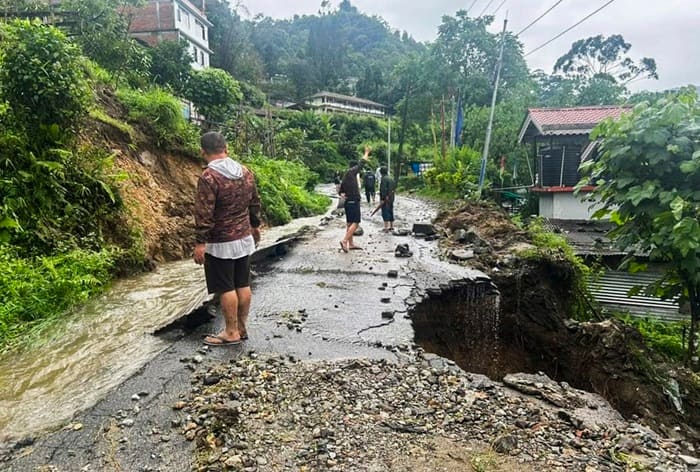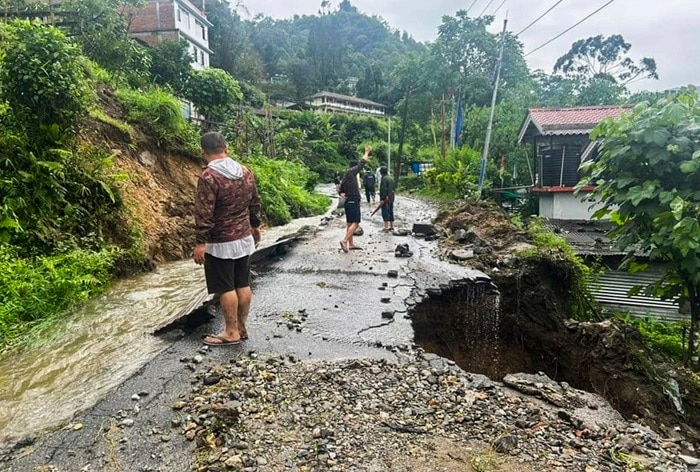As per the record from the Home Ministry, a total of 28 people have lost lives in the past 17 days (till June 26, 2024), since the activation of the monsoon climatic effect in the Himalayan Nation.

Kaski: At least 14 people were killed in landslides, floods and lightning incidents in different parts of Nepal within the last 24 hours as the monsoon spread across the nation. According to the National Disaster Risk Reduction and Management Authority (NDRMA) under the Ministry of Home Affairs, eight people have been killed by landslides, five due to lightning and one due to floods.
“We recorded a total of 44 incidents on June 26, 2024. In those incidents 14 people have lost their lives, 8 are due to landslide, 5 due to lightning and 1 in flooding. 2 people are still unaccounted for in the incident of landslide while 10 people have sustained injuries,” Dijan Bhattarai, Spokesperson at the NDRMA told ANI over the phone.
On Wednesday alone, a landslide claimed five lives in Lamjung, two in Kaski and one in Okhaldhunga while one death has been recorded by the Home Ministry in the incident of flooding.
As per the record from the Home Ministry, a total of 28 people have lost lives in the past 17 days (till June 26, 2024), since the activation of the monsoon climatic effect in the Himalayan Nation.
Along with this, 33 districts have been affected due to the monsoon recording a total of 147 incidents induced within the period of 17 days.
The death toll due to the landslide has stood high in the last 17 days with 14 lives claimed by landslide alone, as per the record of the Home Ministry. Followed by 13 deaths due to the lightning in the same period of time.
Nepal records high mortality due to landslides and flooding during monsoons in an annual basis provided the terrain and unplanned urbanization as well as settlement in the slopes prone to landslides.
The monsoon season in the Himalayan Nation generally begins on June 13 and ends on September 23. Last year, it started on June 14, one day later than the normal onset day.
Nepal is expecting the monsoon to formally gather over its geography from June 13 and remain active for about three months.
Over time, the government has estimated that as many as 1.8 million people could be affected by rain-related incidents during the season.
According to a statement by the 28th Session of the South Asian Climate Outlook Forum released on April 29, above-normal rainfall is most likely during the monsoon season over most parts of South Asia except some areas over northern, eastern and northeastern parts of the region, where below normal rainfall is most likely.
Landslides triggered by heavy rains in Nepal cause tremendous damage to life, property, infrastructure and environment.
In Tarai, tens of thousands of people are affected by floods every year. In the hills, landslides are the main natural hazards occurring very frequently, mostly during monsoon.
The normal monsoon onset and withdrawal dates are June 13 and October 2 respectively. Last year, the monsoon entered eastern Nepal on June 14 and withdrew from eastern Nepal on October 15, delayed by thirteen days.
This year, South Asian meteorologists say, there is a strong consensus among the experts that La Nina conditions are likely to develop over the equatorial Pacific during the second half of the southwest monsoon season.
It is also recognized that the La Nina conditions are generally associated with the normal to above normal southwest monsoon rainfall over most parts of South Asia.
El Nino and La Nina are two opposing climate patterns that break these normal conditions. Global temperatures typically increase during an El Nino episode and fall during La Nina. El Nino means warmer water spreads further and stays closer to the surface. This releases more heat into the atmosphere, creating wetter and warmer air.

